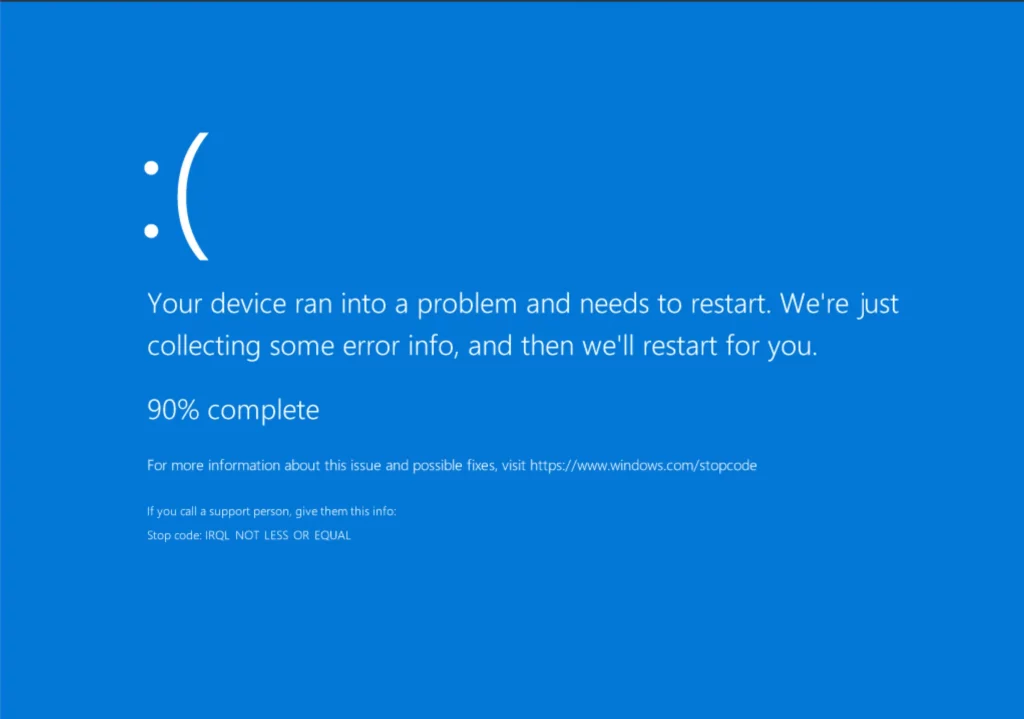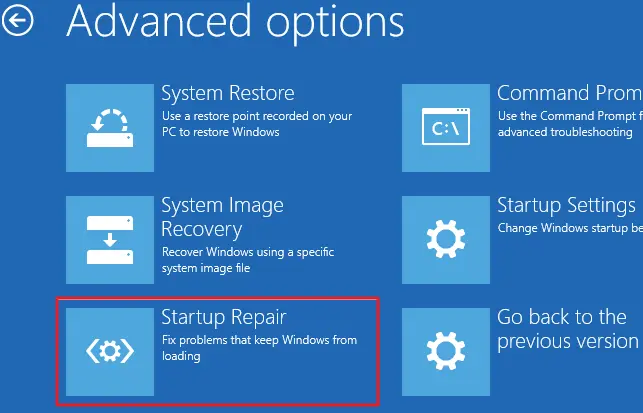Fix Windows 11 blue screen on Startup
When the Windows 11 encounters a problem that it cannot recover from during the startup process, you may be dealt with the dreaded Blue Screen of Death (BSoD). The error message is displayed with a stop code or error code that can help you diagnose the source of the problem.
Why does the Windows 11 blue screen on startup occur?
BSODs can result from various issues on Windows 11 PCs:
- hardware problems
- driver or software conflicts
- corrupt system files
- other critical errors
All of them must be fixed to prevent further damage do your PC.
When the issue occurs during startup, a vital part of the operating system cannot function as normal and you may find yourself in a constant restart loop.
Taking note of the stop code can help you proceed, but common reasons for complete boot failure include:
Hardware Drivers – Incompatibility or conflicts with device drivers, such as graphics card drivers, network drivers, or storage drivers. Your drivers could be outdated, a new installation went wrong or might be causing issue for your other hardware components,
Faulty Hardware – Hardware problems, such as faulty RAM modules, a malfunctioning hard drive, or newly installed hardware that is incorrectly configured or incompatible.
Corrupt System Files – Damaged or missing system files critical for Windows startup that need to be replaced with clean copies.
Software Conflicts – Certain software or programs, especially those that are badly coded or potential malware may conflict with the Windows startup process.
Malware – Viruses and other malware can corrupt system files or deliberately prevent Windows 11 from booting.
Bad Overclocking – Overclocking your CPU or GPU beyond their stable limits.
Failed System Updates – In rare cases, a problematic Windows update or which was interrupted can damage the system.
Corrupted Registry – Issues with the Windows Registry, such as incorrect or corrupt entries.
Power Supply Problems – An unstable or insufficient power supply to the system can result in hardware-related BSODs. This can also occur after a power surge or storm that causes the system to crash unexpectedly.
BIOS/UEFI Settings – Incorrect or incompatible BIOS/UEFI settings may cause startup issues. Some advanced malware can even infect the bios.
Diagnosing Windows 11 blue screen startup problems
Stop codes are the first step in diagnosing why the BSoD is happening. For example:

IRQL_NOT_LESS_OR_EQUAL – This means a system or driver attempted to access a memory location at a higher Interrupt Request Level (IRQL) than it should have, suggesting a driver needs reinstalling or replacing.
MEMORY_MANAGEMENT – This refers to the inability to access RAM and can be a physical hardware problem or an issue within the operating system itself.
There or many different stop code errors and they can be difficult to understand. Before proceeding with fixes, it’s important to determine whether the issue is solely caused by hardware. Consider the following:
Recently Installed Hardware – If the problem recently occurred after installing a new component, it may be incompatible or improperly seated.
Old Hardware – Similarly, older hardware might be failing or even knocked out of position. Have you recently moved your PC tower or bumped into it?
It’s perfectly safe to power off the computer and open the tower to make sure everything is properly seated, and all the cables are connected. Sometimes dust can accumulate and cause overheating. Another common problem for older PCs is the heatsink losing efficient contact with the CPU, which may require the reapplication of thermal paste.
Fixing Windows 11 blue screen on startup
If there are no obvious physical hardware problems, the issue is most likely corruption within the operating system itself. For this, you can enter the recovery environment when booting.
- Hold down the power button until your computer turns off while it’s booting. On the fourth boot, Windows will automatically enter WinRE.
- In the Windows Recovery Environment, select Troubleshoot.
- Choose Advanced options.
- Under Advanced options, you’ll find various recovery and troubleshooting tools, including the Advanced Boot Options.
Advanced Boot Options
Under Advanced Boot Options you will find several possible built-in Windows repair utilities.

Startup Repair – Aims to fix system files related to startup, which is a good place to start for the BSoD on startup.
System Restore – This lets you restore the system to a previous state before the error occurred.
Command Prompt – Here you can enter the command: sfc /scannow
This will scan the entire Windows system files and attempt to recover any missing or corrupted files.
Safe Mode and Fortect
Safe Mode lets you boot into Windows with only its core services running. If this gets you into the desktop you can run a Windows repair tool like Fortect to carry out a full system scan and find the problems that might be causing the BSoD.
The benefit of Fortect is it can replace damaged or missing system files and replace them with the latest copies from its own database. You won’t lose data or system settings, and you do not need a Windows boot disc or drive.
- Download and Install Fortect on your PC.
- After booting in Safe Mode, carry out the system scan in Fortect.
- Click Start Repair to repair everything, including corrupted system files and broken registry entries.
- Wait for the process to complete and restart your PC if prompted.
If you have managed to recover Windows using a restore point or the SFC command, it is still wise to use Fortect to check for other underlying problems that may have caused the BSoD in the first place.
Conclusion
Getting a Windows 11 blue screen on startup can be alarming and may be a sign of serious hardware issues. However, thanks to built-in recovery options there are ways to get back to the desktop.
If the problem is with the operating system, tools like Fortect can get your PC back to full working order in no time.




